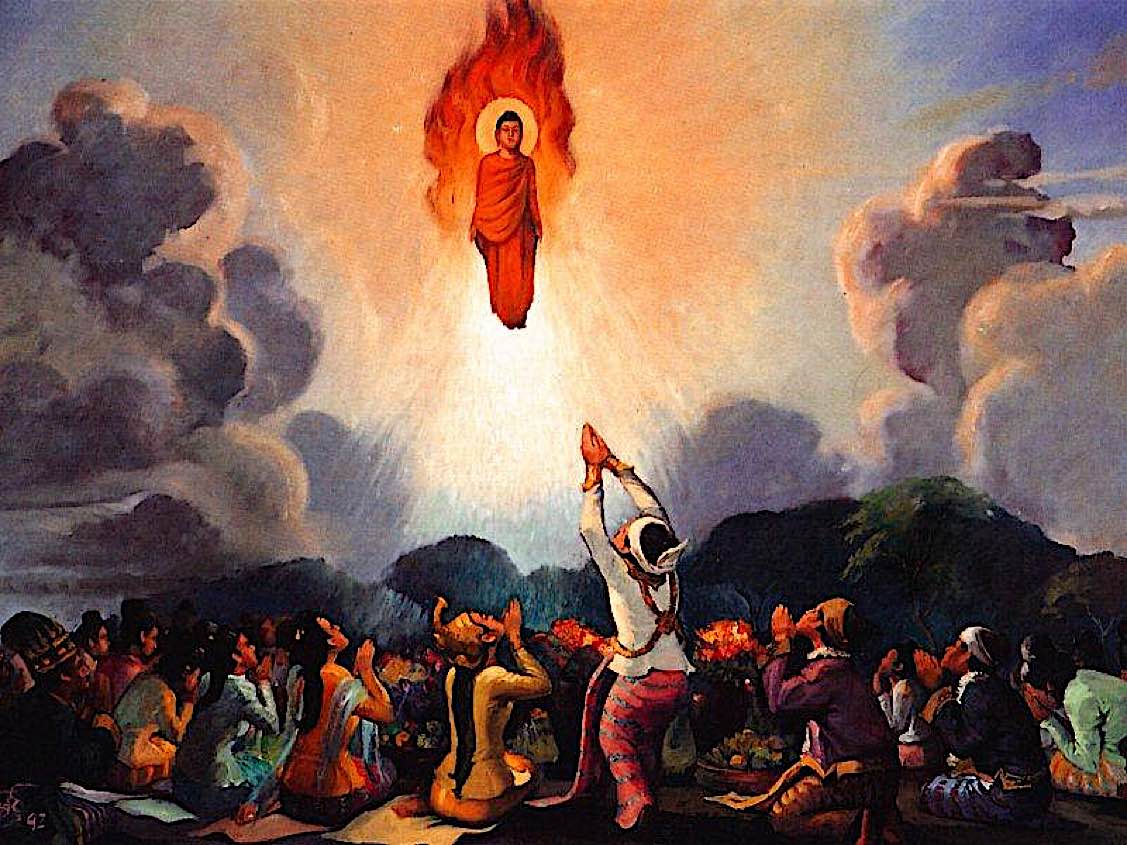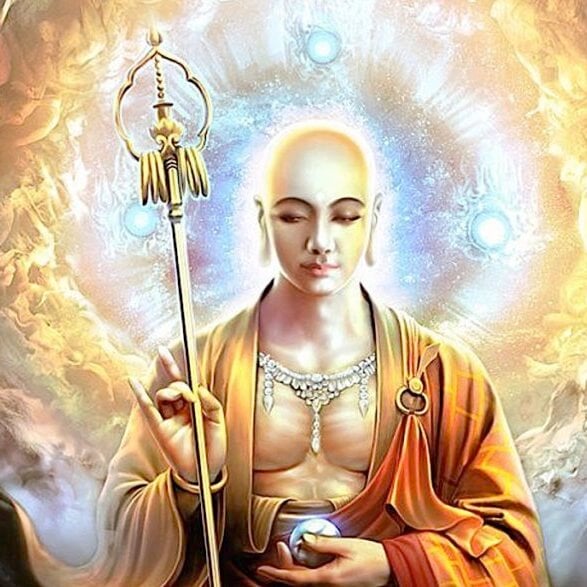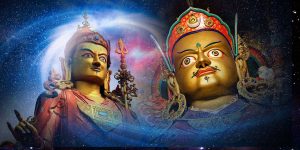Miracles of Buddha: With the approach of Buddha’s 15 Days of Miracles, we celebrate 15 separate miracles of Buddha, starting with Ratana Sutta: Buddha purifies pestilence.
Buddha often told his followers to ignore miraculous powers, to avoid attachments and ego issues, yet each year we celebrate Chotrul Duchen (Chunga Choepa), the 15 Days of Buddha’s Miracles. For the first 15 days of the New Lunar Year, we commemorate the miraculous — the 15-day display of miracles by the Buddha. He performed these numerous miracles to convince the six heretical teachers who challenged the Buddha. The first, the miracle of Vesali, is found in the Rattana Sutta.
Buddha reluctant to perform miracles
With Enlightenment and realizations come siddhis (powers) — but Buddha consistently reprimanded his monks when they displayed powers of any kind. Why? Simplified reason: miraculous powers are unimportant and can actually become an attachment, keeping us in samsara.

Still, Buddha regularly displayed miracles, right from his stunning birth — already walking and speaking as a newborn — to his paranirvana. Did Buddha have miraculous powers? As an Enlightened Being, the answer is yes, and these powers included “mundane” siddhis such as telepathy, Omniscient vision of past and future (including his own past lives), exorcism and many others.
To celebrate the “Buddha’s 15 Days of Miracles” — beginning on lunar New Year (February 10, 2024), Losar, and ending 15 days later on Buddha’s Day of Miracles (March 24, 2020) — we will run a series focusing on some of the more fascinating miracles of Shakyamuni Buddha.
Miracles serve many purposes in spiritual writings. Some people accept them as literal, the Enlightened mind is capable of transcending time and space. Others take them as symbols. The white elephant descending to Buddha’s mother in a dream is one of these. Buddha often used powers simply to highlight a teaching point — such as calmness in the face of a charging elephant — or to capture an audience for an important teaching. The later is the case with the Miracle of Vesali, found in the Ratana Sutta (full Sutta below.)

The Miracle of Vesali
In this miracle, found in the Ratana Sutta, called The Jewel Discourse or Jewel Sutra, tells a tale of woe. The city of Vesali has endured famine, pestilence and evil spirits for three years. They ask Buddha for help.
“With the arrival of the Master, there were torrential rains, which swept away the putrefying corpses. The atmosphere became purified the city was clean.”
Purification is the precursor for receiving blessings, merit and teachings from the Buddha. The city, now cleansed, gathers for an important teaching called the Jewel Discourse.
“Whatever treasure there be either in the world beyond, whatever precious jewel there be in the heavenly worlds, there is naught comparable to the Tathágata (the perfect One). This precious jewel is the Buddha. By this (asseveration of the) truth may there be happiness.”
Ratana Sutta
The Jewel Discourse
The occasion for this discourse, in brief, according to the commentary, is as follows: The city of Vesali was afflicted by a famine, causing death, especially to the poor folk. Due to the presence of decaying corpses the evil spirits began to haunt the city; this was followed by a pestilence. Plagued by these three fears of famine, non-human beings and pestilence, the citizens sought the help of the Buddha who was then living at Rajagaha.
Followed by a large number of monks including the Venerable Ánanda, his attendant disciple, the Buddha came to the city of Vesali. With the arrival of the Master, there were torrential rains, which swept away the putrefying corpses. The atmosphere became purified the city was clean.
Thereupon the Buddha delivered this Jewel Discourse (Ratana Sutta) to the Venerable Ánanda, and gave him instructions as to how he should tour the city with the Licchavi citizens reciting the discourse as a mark of protection to the people of Vesali. The Venerable Ánanda followed the instructions, and sprinkled the sanctified water from the Buddha’s own alms bowl. As a consequence the evil spirits were exorcised the pestilence subsided. Thereafter the Venerable Ánanda returned with the citizens of Vesali to the Public hall where the Buddha and his disciples had assembled awaiting his arrival. There the Buddha recited the same Jewel Discourse to the gathering:
- “Whatever beings (non-humans) are assembled here, terrestrial or celestial, may they all have peace of mind, and may they listen attentively to these words:
- “O beings, listen closely. May you all radiate loving-kindness to those human beings who, by day and night, bring offerings to you (offer merit to you). Wherefore, protect them with diligence.
- “Whatever treasure there be either in the world beyond, whatever precious jewel there be in the heavenly worlds, there is naught comparable to the Tathágata (the perfect One). This precious jewel is the Buddha. By this (asseveration of the) truth may there be happiness.
- “That Cessation, that Detachment, that Deathlessness (Nibbána) supreme, the calm and collected Sakyan Sage (the Buddha) had realized. There is naught comparable to this (Nibbána) Dhamma. This precious jewel is the Dhamma. By this (asseveration of the) truth may there be happiness.
- “The Supreme Buddha extolled a path of purity (the Noble Eightfold Path) calling it the path which unfailingly brings concentration. There is naught comparable to this concentration. This precious jewel is the Dhamma. By this (asseveration of the) truth may there be happiness.
- “The eight persons extolled by virtuous men constitute four pairs. They are the disciples of the Buddha and are worthy of offerings. Gifts given to them yield rich results. This precious jewel is the Sangha. By this (asseveration of the) truth may there be happiness.
- “With a steadfast mind, and applying themselves well in the dispensation of the Buddha Gotama, free from (defilements), they have attained to that which should be attained (Arahantship) encountering the Deathless. They enjoy the Peace of Nibbána freely obtained. This precious jewel is the Sangha. By this (asseveration of the) truth may there be happiness.
- “As a post deep-planted in the earth stands unshaken by the winds from the four quarters, so, too, I declare is the righteous man who comprehends with wisdom the Noble Truths. This precious jewel is the Sangha. By this (asseveration of the) truth may there be happiness.
- “Those who realized the Noble Truths well taught by him who is profound in wisdom (the Buddha), even though they may be exceedingly heedless, they will not take an eighth existence (in the realm of sense spheres). This precious jewel is the Sangha. By this (asseveration of the) truth may there be happiness.
- “With his gaining of insight he abandons three states of mind, namely self-illusion, doubt, and indulgence in meaningless rites and rituals, should there be any. He is also fully freed from the four states of woe, and therefore, incapable of committing the six major wrongdoings. This precious jewel is the Sangha. By this (asseveration of the) truth may there be happiness.
- “Any evil action he may still do by deed, word or thought, he is incapable of concealing it; since it has been proclaimed that such concealing is impossible for one who has seen the Path (of Nibbána). This precious jewel is the Sangha. By this (asseveration of the) truth may there be happiness.
- “As the woodland groves though in the early heat of the summer month are crowned with blossoming flowers even so is the sublime Dhamma leading to the (calm) of Nibbána which is taught (by the Buddha) for the highest good. This precious jewel is the Buddha. By this (asseveration of the) truth may there be happiness.
- “The Peerless Excellent one (the Buddha) the Knower (of Nibbána), the Giver (of Nibbána), the Bringer (of the Noble Path), taught the excellent Dhamma. This precious jewel is the Buddha. By this (asseveration of the) truth may there be happiness.
- “Their past (kamma) is spent, their new (kamma) no more arises, their mind to future becoming is unattached. Their germ (of rebirth-consciousness) has died, they have no more desire for re-living. Those wise men fade out (of existence) as the flame of this lamp (which has just faded away). This precious jewel is the Sangha. By this (asseveration of the) truth may there be happiness.
- “Whatever beings (non-human) are assembled here, terrestrial or celestial, come let us salute the Buddha, the Tathágata (the perfect One), honored by gods and men. May there be happiness.
- “Whatever beings are assembled here terrestrial or celestial, come let us salute the perfect Dhamma, honored by gods and men. May there be happiness.
- “Whatever beings are assembled here terrestrial or celestial, come let us salute the perfect Sangha, honored by gods and men. May there be happiness.”
3 thoughts on “Miracles of Buddha: With the approach of Buddha’s 15 Days of Miracles, we celebrate 15 separate miracles of Buddha, starting with Ratana Sutta: Buddha purifies pestilence.”
Leave a Comment
More articles by this author

Lama Zopa Rinpoche and other teachers recommend Kṣitigarbha mantra and practice for times of disaster, especially hurricane and earthquake, because of the great Bodhisattva’s vow

Profound simplicity of “Amituofo”: why Nianfo or Nembutsu is a deep, complete practice with innumerable benefits and cannot be dismissed as faith-based: w. full Amitabha Sutra

“Torches That Help Light My Path”: Thich Nhat Hanh’s Translation of the Sutra on the Eight Realizations of the Great Beings

Maha Mangala Sutta, Life’s Highest Blessings, The Sutra on Happiness, the Tathagata’s Teaching to Gods and Men
Search
Latest Features
Please support the "Spread the Dharma" mission as one of our heroic Dharma Supporting Members, or with a one-time donation.
Please Help Support the “Spread the Dharma” Mission!

Be a part of the noble mission as a supporting member or a patron, or a volunteer contributor of content.
The power of Dharma to help sentient beings, in part, lies in ensuring access to Buddha’s precious Dharma — the mission of Buddha Weekly. We can’t do it without you!
A non-profit association since 2007, Buddha Weekly published many feature articles, videos, and, podcasts. Please consider supporting the mission to preserve and “Spread the Dharma." Your support as either a patron or a supporting member helps defray the high costs of producing quality Dharma content. Thank you! Learn more here, or become one of our super karma heroes on Patreon.
Josephine Nolan
Author | Buddha Weekly
Josephine Nolan is an editor and contributing feature writer for several online publications, including EDI Weekly and Buddha Weekly.















I love your site great information,but for some reason I can not print the pages without getting an overlay of other sentences,regardless of which computer I use,any suggestions.
Thanks for letting us know. We’ll try a couple tests here. Did you try saving the page as a PDF? That might work. In kindness, Lee
Hi Naniwea disgonihi, You should now be able to print. We added some code to allow print CSS. There is a print button on the top right of each feature. It does not keep all the formatting, but it gives you a clean printout. In kindness, Lee